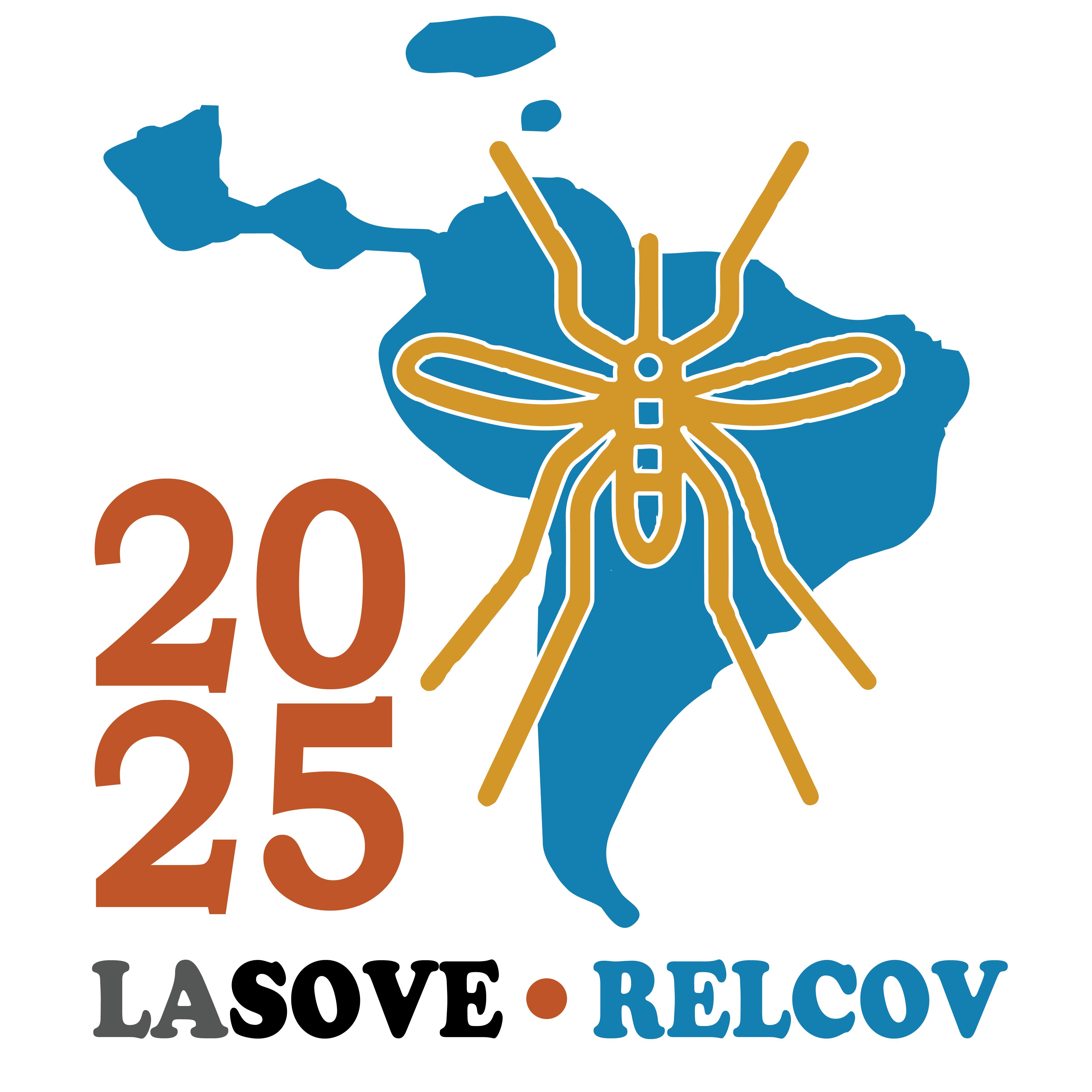Simposio: Invertebrados vectores de enfermedades de importancia agropecuaria
SIMPOSIO
Invertebrados vectores de enfermedades de importancia agropecuaria
COORDINA: Christina B. McCARTHY

Soluciones innovadoras para el control de vectores agrícolas: Un camino hacia adelante
Los vectores invertebrados desempeñan un papel crucial en la transmisión de una amplia variedad de patógenos que afectan tanto a plantas como a animales, lo que conlleva importantes pérdidas económicas en la agricultura a nivel mundial.
Este simposio incluye varios vectores invertebrados clave que revisten especial importancia para nuestra región latinoamericana: chicharritas (Cicadellidae), psílidos (Psylloidea), Bemisia tabaci (Gennadius) (Hemiptera: Aleyrodidae) y Varroa destructor (Parasitiformes: Varroidae).
Las chicharritas y los psílidos son conocidos por transmitir patógenos vegetales devastadores, incluidos fitoplasmas, espiroplasmas y virus, que provocan enfermedades como el espiroplasma del achaparramiento del maíz y el huanglongbing (HLB) o «greening» de los cítricos, además de causar daños directos por alimentación.
Bemisia tabaci, una mosca blanca altamente polífaga, es un vector reconocido a nivel mundial por transmitir numerosos begomovirus y otros virus vegetales, contribuyendo a reducciones significativas en los rendimientos de cultivos hortícolas y de campo.
A diferencia de los patógenos vegetales directos, Varroa destructor es un ácaro ectoparásito de las abejas melíferas (Apis mellifera) que se encuentra ampliamente distribuido en la región. La alimentación parasitaria de V. destructor no solo debilita las colonias de abejas mediante inmunosupresión, sino que también favorece la replicación y transmisión de diversos virus de ARN, como el Virus de las Alas Deformadas (DWV), que en conjunto provocan el debilitamiento y colapso de las colonias.
Comprender las complejas interacciones entre estos vectores, los patógenos asociados y sus respectivos hospedadores es fundamental para desarrollar estrategias de manejo integrado de plagas. Este simposio destaca la necesidad urgente de continuar con la investigación en biología de vectores, epidemiología de patógenos y nuevas medidas de control, con el fin de mitigar los graves impactos agrícolas y apícolas que representan estos vectores invertebrados de enfermedades.
Palabras claves: chicharritas, psílidos, Bemisia tabaci, Varroa destructor, manejo de vectores.
Créditos de las imágenes utilizadas en esta página web
Diaphorina citri, imagen por USGS Bee Inventory and Monitoring Lab, CC-BY 2.0, Wikimedia Commons (https://commons.wikimedia.org/wiki/File:Citrus_psyllid,hand_sanitizer,_adult,_ft_detrick_2014-05-01-09.43.40_ZS_PMax(15234786967).jpg) | Las imágenes de las personas miembro de los distintos comités de LA SOVE RELCOV 2025 así como las imágenes de los/as oradores/as fueron provistas por las mismas personas para uso exclusivo en esta página web. Los/as autores/as de estas imágenes se reservan el derecho de uso y reproducción de las mismas.
